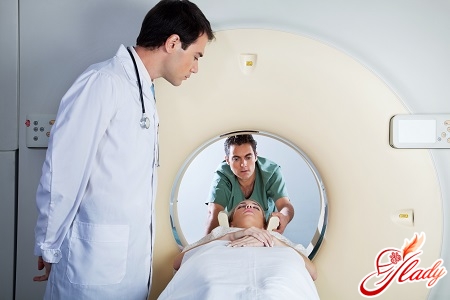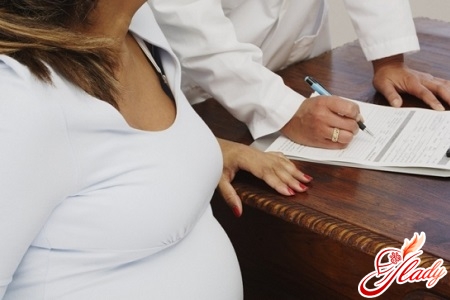
"There are no healthy people, there are underdeveloped", -reads one well-known and rather bearded anecdote. But, as you know, every joke has its own share of truth. The human body is full of various "roommates", and not all of them have a beneficial effect on the body and its work. Even a completely healthy person can have serious health problems, just for the time being the disease runs off-line. For example, ureaplasma in women is quite difficult to diagnose. Today's medicine has opened a wide variety of sexually transmitted infections. Almost all STDs are accompanied by the same or very similar symptoms. So in no case it is impossible to make a diagnosis for yourself and especially to engage in self-medication. One of the most common diseases is ureaplasmosis, it is found mainly in women and is usually transmitted sexually, to a less frequent contact-household. There are cases of infection with ureaplasma and in newborns: infection occurs during the intrauterine period or directly during labor.

What is ureaplasma?
Ureaplasmas are microorganisms with a diameter of about0.3 microns. They do not have a cell membrane and their own DNA, so they live off the body in which they parasitize. Often live on the mucosa of the genital tract. In a small amount, they do not bring problems and worries to their bearer, but as soon as the total resistance of the organism decreases, they begin to multiply, which can lead to various complications and inflammatory processes. The cause of a sharp increase in the number of ureaplasma in women can serve as: menstruation, pregnancy and childbirth, manipulation with intrauterine contraceptives (IUD), medical abortion, common diseases and exacerbation of chronic diseases. Possible consequences of the disease
- colpitis (inflammation of the vagina);
- cystitis (inflammation of the bladder);
- endometritis (inflammation of the uterine wall);
- cervicitis (inflammation of the cervix);
- postpartum endometritis;
- various pathologies of pregnancy and fetus.
Today, there are many drugs thatcan cure the disease quickly and without consequences. Diagnosis of the disease All the complexity of diagnosing this disease lies in the fact that in 90% of cases it occurs almost asymptomatically. The period of the disease lasts from several days to several months, but sometimes the disease and does not manifest at all throughout the life of a person. Ureaplasma is diagnosed with a swab for analysis. To study it, two methods are usually used: polymer chain reaction (PCR) or bacterial culture on nutrient media. Comprehensive studies are best suited for a more accurate determination of the presence of microorganisms. Symptoms of the disease The first conditions, different from the norm, usually appear after an asymptomatic period, which lasts from 4 days to 1 month. The duration of this period for men and women is the same. Symptoms in women:
- Allocations, usually transparent and not very abundant;
- Rapid and painful urination;
- With the oral-genital route of infection, there may be a sore throat, a purulent coating on the tonsils and other symptoms resembling angina;
- In the formation of inflammation, a cutting pain in the lower abdomen.
Symptoms in men:
- Discharge from the urethra, in a consistency resembling slime;
- A burning sensation and a slight itching when urinating;
- The urine becomes turbid.
Even the presence of all symptoms at the same timemeans the presence of ureaplasma in the human body. Do not forget about the complexity of diagnosing this disease, but each of these symptoms - a deviation from the norm and is the reason for a visit to the doctor. 
Treatment of ureaplasmosis in women
For the successful treatment of ureaplasmosis,an integrated approach and specially selected drugs. The intake of vitamins and immunomodulators, the use of special antibiotics, local procedures, sometimes physiotherapy is added to this list. This is the only way to completely rid the body of harmful microorganisms. Subsequently, after complete recovery, systematic follow-up examinations should be carried out systematically. Sometimes unpleasant symptoms can go away on their own, but this does not necessarily mean that the disease has receded: it is necessary to undergo a full course of treatment, otherwise it is possible not only to relapse of the disease, but also to aggravate the problem, and also unpleasant consequences, which will be much harder to get rid of It's more dangerous. Since the carriers of the virus are both partners, then they must be treated in parallel, otherwise a sick partner will again infect a healthy partner. In case of suspicion of ureaplasmosis a woman needs to turn to a gynecologist, and a man - to a venereologist. To treat this disease is necessary necessarily a drug prescribed by your doctor, microorganisms of ureaplasma are immune to certain types of antibiotics. The sooner the treatment begins and the medication is taken, the sooner health will return to normal. 
Ureaplasma and pregnancy
Scientists still can not say withone hundred percent certainty, whether ureaplasma can cause oppression of reproductive functions and, consequently, infertility. But, regardless of the answer to this question, during pregnancy planning it is necessary to be checked for this infection. The cause of ureaplasmosis in women can be not only proximity to an infected partner, but also a trip to a public toilet. The disease is dangerous for the child in his first weeks of life in the womb, during this period, antibiotic treatment is also highly undesirable. Do not forget about the fact of ureaplasma growth during pregnancy in infected women. Even a small number of these microorganisms can rapidly expand and exceed the critical point. Constant stress, reduced immunity and hormonal bursts are just ideal conditions for the reproduction of ureaplasma. Often because of the disease, labor activity occurs prematurely, and the postpartum period is quite difficult. Ureaplasma is not a direct indication for abortion. After 22 weeks of pregnancy, you can undergo treatment, after which further bearing and childbirth will be successful. With the proper treatment of ureaplasmosis in women during pregnancy, the effects of the disease will be minimized. Treatment of ureaplasmosis during pregnancy Treatment of ureaplasma in women during pregnancy is possible. But it is highly undesirable, especially in the early stages, since such treatment can cause the emergence of consequences associated with the reaction of the body to drugs. But the lack of treatment can also lead to unpleasant consequences. During fetal development, the fetus is protected by the placenta and usually the infection can not reach it, although there are rare cases of intrauterine infection. In sick women during labor during the passage of the birth canal every second newborn is infected. For prompt and correct treatment, you should immediately tell the doctor who is leading your pregnancy about the presence of the disease or suspicions of it.









